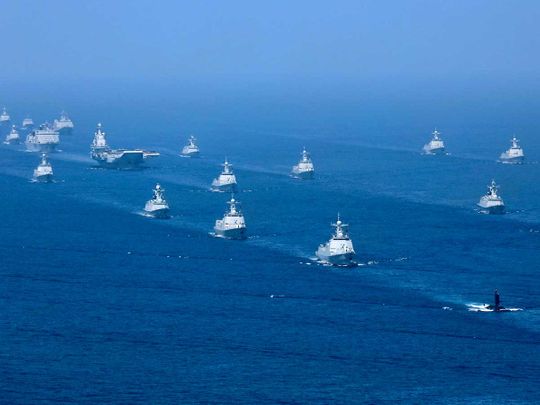
China and the Philippines have been involved in a dispute over a decrepit WWII vessel, BRP Sierra Madre, used by the Philippines as a military outpost in the Second Thomas Shoal. Manila grounded the ship in 1999 to reinforce its sovereignty claims over the area, which the Philippines considers its exclusive economic zone.
The ship is home to a handful of Filipino marines, who are periodically supplied with food, fuel, and other necessities by the Philippines Coast Guard. China considers much of the South China Sea as historically part of China.
Manila has repeatedly accused Beijing of blocking resupply missions to the vessel. In August China sprayed a Philippines resupply vessel with water cannons, forcing one of the two supply boats to abandon its mission. Manila claimed that the boats were carrying water, food supplies, and fuel and described China’s actions as “excessive and offensive.”
China claimed that it had exercised restraint and urged Manila to stop all “provocative” actions, vowing to continue taking necessary measures to safeguard China’s sovereignty and maritime rights.
Fate of the Shoal
Beijing, which claims sovereignty over the submerged reef, known as Ayungin in the Philippines and Ren’ai in China, urged the Philippine military to remove the grounded ship. Manila summoned the Chinese envoy and lodged a diplomatic protest. This marks the 400th such protest lodged by the Philippines since 2020.
The fate of the Shoal has implications for the rest of the South China Sea. The Chinese foreign minister, Wang Yi, on a visit to Singapore last week, offered bilateral dialogue to the Philippines to resolve differences over the South China Sea.
Though supplies to the marines on the ship have been sent since, the immediate focus will remain on continued resupplies to the beleaguered vessel.
This needs to be done soon for practical reasons but also has longer-term political implications. One possible option is to assign resupply duties to the Philippines Navy in place of the Coast Guard, but that will also raise the ante, which China is capable of handling independently.
A joint resupply operation?
There are reports that the US, Japan, the Philippines, and Australia might undertake a joint resupply operation. Recent reports have quoted Jonathan Malaya, the spokesman for the Philippine task force for the South China Sea, stating that discussions to launch joint US-Philippines patrols were “in their advanced stages” and that patrols could be launched before the end of the year.
If the plan materialises, it will be the first time the Philippines has joined multilateral maritime patrols in the South China Sea. This reflects the rapid advance of US-Philippines relations under Ferdinand Marcos Jr. While this development, when it comes to fruition, would likely upset Beijing.
Preserving the existing diplomatic status quo appears to be the most pragmatic and judicious approach at this juncture, particularly when considering the intricate and contentious matter of South China Sea sovereignty. While tensions and disputes persist in the region, a comprehensive resolution to this multifaceted issue remains elusive.
Therefore, adopting a stance of diplomatic stasis allows for continued dialogue, negotiation, and diplomatic efforts to eventually pave the way for a more permanent and satisfactory solution.
It acknowledges the complexity of the situation and the necessity for all involved parties to engage in sustained diplomatic discourse until a mutually agreeable resolution can be achieved, avoiding any abrupt or potentially escalatory actions that may exacerbate an already fragile situation.
Sajjad Ashraf served as an adjunct professor at the Lee Kuan Yew School of Public Policy, National University of Singapore from 2009 to 2017. He was a member of Pakistan Foreign Service from 1973 to 2008 and served aa ambassador to several countries.








